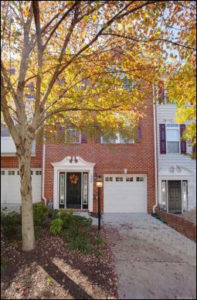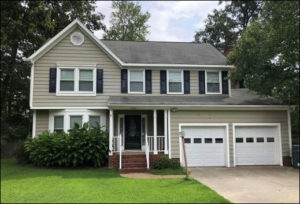Something is seriously out of whack here. The Richmond Redevelopment and Housing Authority (RRHA) has a vision — a commendable one, I might add — of demolishing the city’s six public housing projects to end concentrated pockets of poverty, crime, substance abuse and social dysfunction. But it turns out that the price of developing new mixed-income apartments runs around $250,000 per unit.
The RHHA has concluded that it would be significantly cheaper to renovate the existing public housing stock at the cost of roughly $50,000 to $60,000 per unit, reports the Richmond Free Press. New construction would take about 30 years to replace the 3,300 public housing units. Renovations would cut the time to 10 to 15 years. De-concentrating poverty, it appears, is no easy task.
 But how can it cost $250,000 to build a new public housing apartment unit? At right is a townhouse on the market for $250,000. It has 2,349 square feet with the following features: two and a half bathrooms; a one-car garage, and a master suite with huge walk-in closet and en-suite bath with jetted tub, shower and double vanity. It is located within 10 minutes of downtown, Carytown, VCU, and James River trails and parks.
But how can it cost $250,000 to build a new public housing apartment unit? At right is a townhouse on the market for $250,000. It has 2,349 square feet with the following features: two and a half bathrooms; a one-car garage, and a master suite with huge walk-in closet and en-suite bath with jetted tub, shower and double vanity. It is located within 10 minutes of downtown, Carytown, VCU, and James River trails and parks.
If townhouse living isn’t your style, then there are numerous single-family dwellings in suburban neighborhoods. For example, the house at left is also on the market for $250,000. It has 1,900 square feet, two-and-a-half baths, a fenced backyard, a two-car garage, and “a glamour bath with Whirlpool” tub.
How big are the RRHA’s new public housing units? What amenities do they have? Was RRHA proposing to place poor people into units normally affordable by the middle-class as part of its proposed “mixed-income” projects — in effect vaulting low-income public-housing residents into vastly improved housing conditions? Did it run up costs by ensnaring the projects in bureaucratic red tape? Or is there some other explanation?
The justification for “public” housing is that government can address “market failure” in the housing market by providing shelter for lower-income Americans at a lower cost than private industry can. Clearly, there is no market failure in Richmond’s middle-class housing market. The failure more likely is a regulatory one in which local governments have zoned affordable housing categories — boarding houses, Single Room Occupancy rooms with shared amenities, garage apartments, granny flats, trailers, and converted cargo containers — out of existence.
Still, it astonishes me that the best RRHA can do is $250,000 in new construction or $50,000 for renovated units. What’s the opposite of “market failure”? Government failure? That, it appears, is what we’re dealing with here. Pity the poor who find themselves wards of the state.


Leave a Reply
You must be logged in to post a comment.